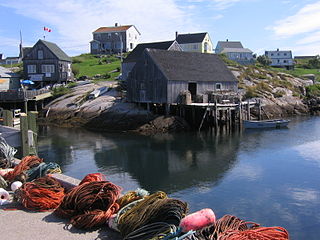
The Maritimes, also called the Maritime provinces, is a region of Eastern Canada consisting of three provinces: New Brunswick, Nova Scotia, and Prince Edward Island. The Maritimes had a population of 1,899,324 in 2021, which makes up 5.1% of Canada's population. Together with Canada's easternmost province, Newfoundland and Labrador, the Maritime provinces make up the region of Atlantic Canada.
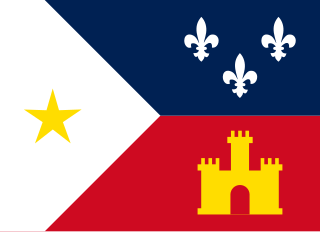
The Cajuns, also known as Louisiana Acadians, are a Louisiana French ethnicity mainly found in the U.S. state of Louisiana.

Acadia was a colony of New France in northeastern North America which included parts of what are now the Maritime provinces, the Gaspé Peninsula and Maine to the Kennebec River. During much of the 17th and early 18th centuries, Norridgewock on the Kennebec River and Castine at the end of the Penobscot River were the southernmost settlements of Acadia. The French government specified land bordering the Atlantic coast, roughly between the 40th and 46th parallels. It was eventually divided into British colonies. The population of Acadia included the various indigenous First Nations that comprised the Wabanaki Confederacy, the Acadian people and other French settlers.

French Canadians, or Franco-Canadians, refers to an ethnic group who trace their ancestry to French colonists who settled in France's colony of Canada beginning in the 17th century.

Acadian French is a variety of French spoken by Acadians, mostly in the region of Acadia, Canada. Acadian French has 7 regional accents, including Chiac and Brayon.
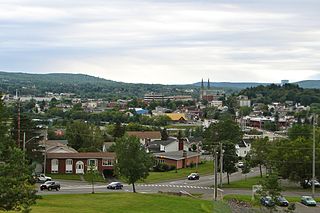
Edmundston is a city in Madawaska County, New Brunswick, Canada.
The French language is spoken as a minority language in the United States. Roughly 2.1 million Americans over the age of five reported speaking the language at home in a federal 2010 estimate, making French the fourth most-spoken language in the nation behind English, Spanish, and Chinese.
As a cosmopolitan city, Quebec is a home to varied genres of music, ranging from folk to hip hop. Music has played an important role in Quebecer culture. In the 1920s and '30s, singer/songwriter Madam Bolduc performed comedic songs in a folk style with Irish influences. Quebec's most popular artists of the last century include Félix Leclerc (1950s), Gilles Vigneault (1960s–present), Kate and Anna McGarrigle (1970s–present) and Céline Dion (1980s–present).

Chiac, is a variety of Acadian French spoken mostly in southeastern New Brunswick, Canada. Chiac is often characterized and distinguished from other forms of Acadian French by its borrowings from English, and is thus often mistakenly considered a form of Franglais. The word "Chiac" can also sometimes be used to describe an ethnic Acadian of rural southeastern New Brunswick.

The Université de Moncton is a Canadian francophone university in New Brunswick. It includes campuses in Edmundston, Moncton, and Shippagan.

Memramcook, sometimes also spelled Memramcouke or Memramkouke, is a village in Westmorland County, New Brunswick, Canada. Located in south-eastern New Brunswick, the community is predominantly people of Acadian descent who speak the Chiac derivative of the French language. An agricultural village, it has a strong local patrimony, key to the history of the region. It was home to Mi'kmaqs for many years and was the arrival site of Acadians in 1700. A large part of these Acadians were deported in 1755, but the village itself survived.
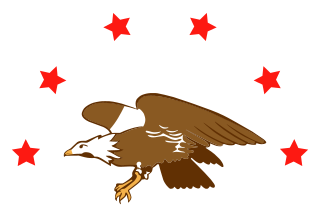
The Republic of Madawaska was a putative republic in the northwest corner of Madawaska County, New Brunswick and adjacent areas of Aroostook County in the US state of Maine and of Quebec. The word "Madawaska" comes from the Miꞌkmaq words madawas and kak (porcupine). Thus, the Madawaska is "the country of the porcupine". The Madawaska River which flows into the Saint John River at Edmundston, New Brunswick, and Madawaska, Maine, flows through the region.
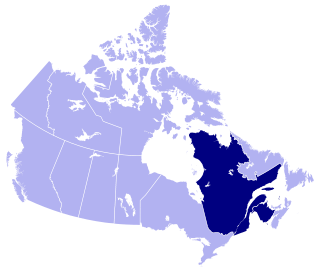
French is the mother tongue of approximately 7.2 million Canadians according to the 2016 Canadian Census. Most Canadian native speakers of French live in Quebec, the only province where French is the majority language and the only province in which it is the sole official language. Of Quebec's people, 71.2 percent are native francophones and 95 percent speak French as their first or second language.

Marie-Chantal Toupin is a Quebec singer. She has released a number of albums of pop and soft rock music. Toupin has sold over 300,000 albums in Canada and has had two albums certified platinum.

Tintamarre is an Acadian tradition of marching through one's community making noise with improvised instruments and other noisemakers, usually in celebration of National Acadian Day. The term originates from the Acadian French word meaning "clangour" or "din". The practice is intended to demonstrate the vitality and solidarity of Acadian society, and to remind others of the presence of Acadians. It originated in the mid-twentieth century, likely inspired by an ancient French folk custom.
Brayons, also called Madawaskayens, are a francophone people inhabiting the area in and around Madawaska County, New Brunswick, Canada, including some parts of northern Maine. In French, Brayons are referred to by the masculine les Brayons or the feminine les Brayonnes. They speak with a French accent also known as "Brayon".
Canadian French is the French language as it is spoken in Canada. It includes multiple varieties, the most prominent of which is Québécois. Formerly Canadian French referred solely to Quebec French and the closely related varieties of Ontario (Franco-Ontarian) and Western Canada—in contrast with Acadian French, which is spoken by Acadians in New Brunswick and some areas of Nova Scotia, Prince Edward Island and Newfoundland & Labrador.

The Place d’Acadie is a public square in the 6th arrondissement of Paris, dedicated on 8 March 1984 by the mayor of Paris, Jacques Chirac, and by the president of an association called "Les Amitiés Acadiennes", Philippe Rossillon. It is located near the Mabillon metro station, where the Boulevard Saint-Germain intersects the Rue du Four and the Rue de Buci.
Quebecers or Quebeckers are people associated with Quebec. The term is most often used in reference to descendants of the French settlers in Quebec but it can also be used to describe people of any ethnicity who live in the province.

Acadia is a North American cultural region in the Maritime provinces of Canada where approximately 300,000 French-speaking Acadians live. The region lacks clear or formal borders; it is usually considered to be the north and east of New Brunswick as well as a few isolated localities in Prince Edward Island and Nova Scotia. Some also include a few localities in Quebec and/or Maine.